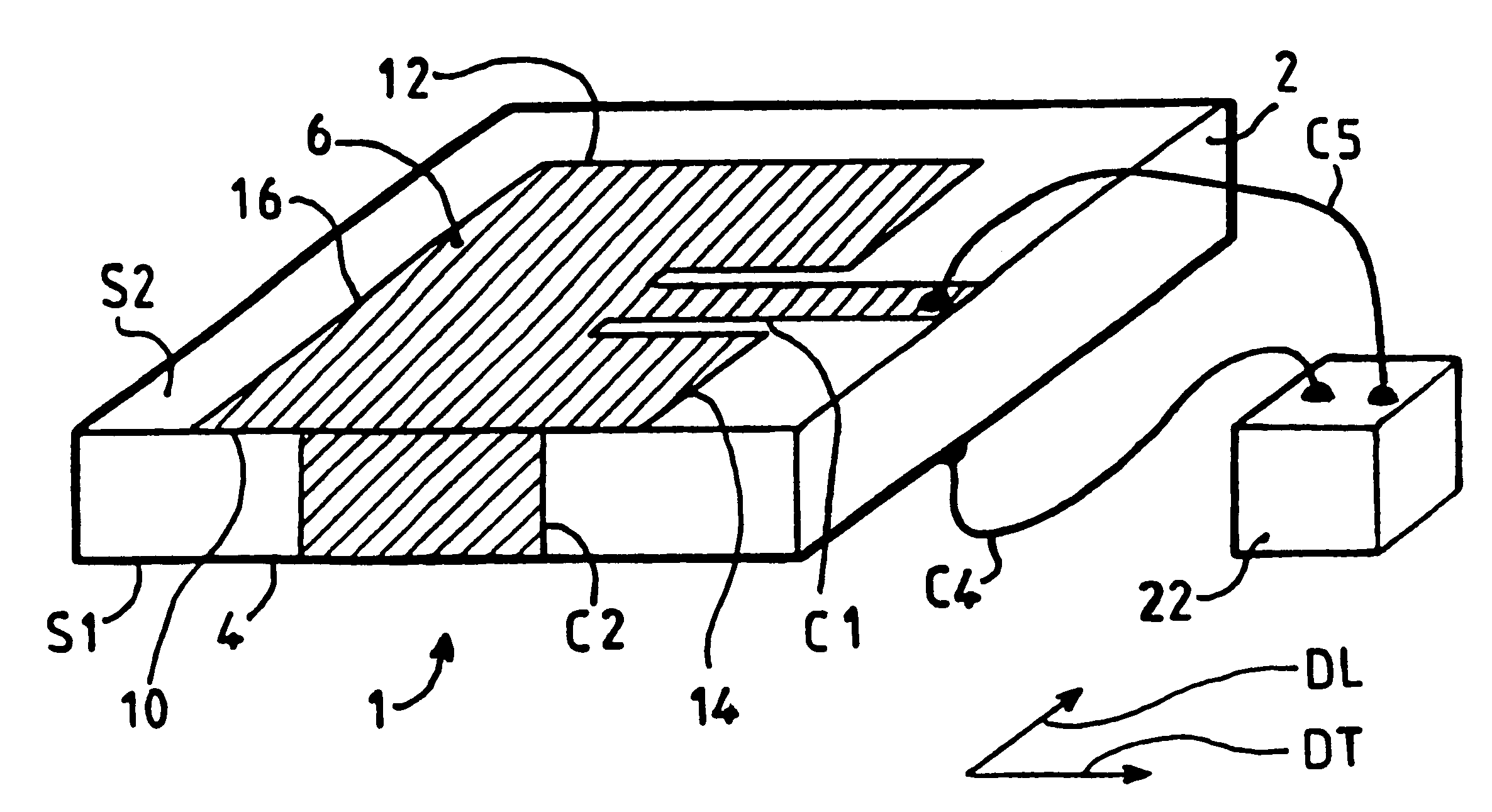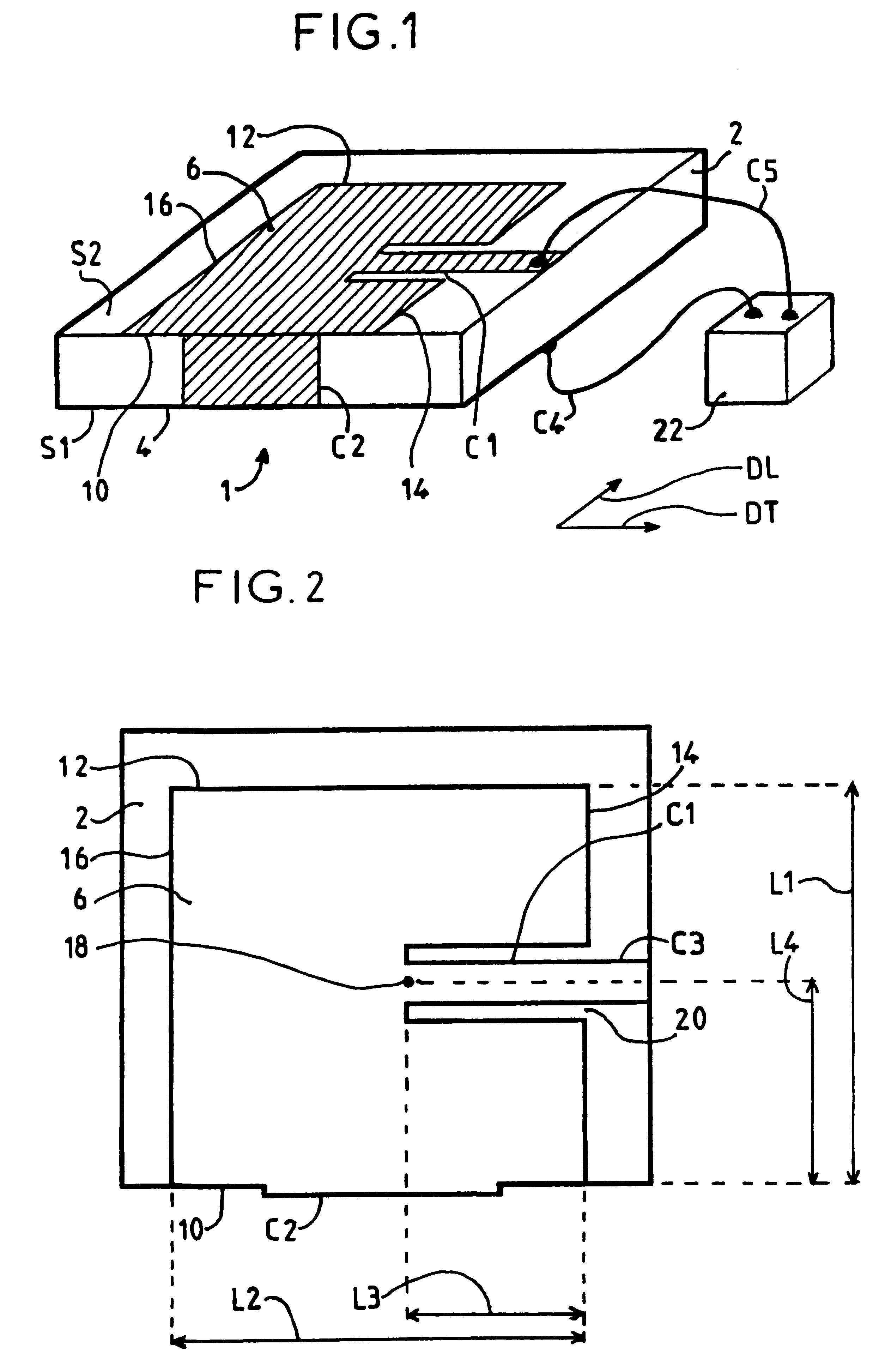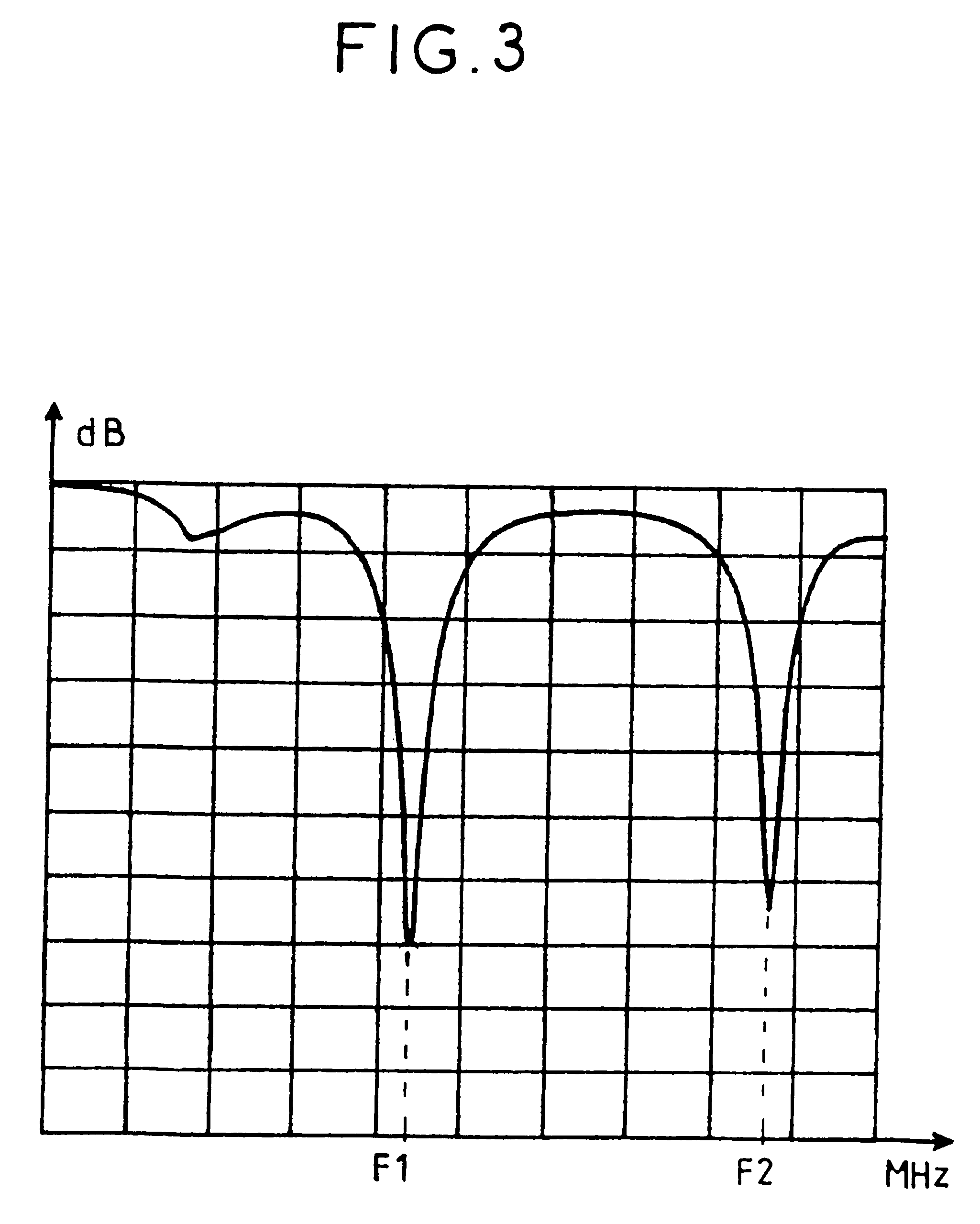Radiocommunication device and a dual-frequency microstrip antenna
a radiocommunication device and microstrip technology, applied in the direction of antennas, antenna details, antenna earthings, etc., can solve the problems of complex implementation, unfavorable transmission, and unwanted standing wave in the lin
- Summary
- Abstract
- Description
- Claims
- Application Information
AI Technical Summary
Benefits of technology
Problems solved by technology
Method used
Image
Examples
Embodiment Construction
As shown in FIGS. 1 and 2, and in a manner that is known per se, an antenna in accordance with the present invention includes a resonant structure including the following components:
A dielectric substrate 2 having two opposite main surfaces extending in directions defined in the antenna and constituting horizontal directions DL and DT, which directions may depend on the area concerned of the antenna. The substrate can have various shapes, as previously explained. Its two main surfaces are a bottom surface S1 and a top surface S2.
A bottom conductive layer extending over all of the bottom surface, for example, and constituting a ground 4 of the antenna.
A top conductive layer extending over an area of the top surface over the ground 4 to constitute a patch 6. The patch has a length and a width in said two horizontal directions that are defined hereinafter and which constitute a longitudinal direction DL and a transverse direction DT, respectively, and its periphery can be considered as...
PUM
 Login to View More
Login to View More Abstract
Description
Claims
Application Information
 Login to View More
Login to View More - R&D
- Intellectual Property
- Life Sciences
- Materials
- Tech Scout
- Unparalleled Data Quality
- Higher Quality Content
- 60% Fewer Hallucinations
Browse by: Latest US Patents, China's latest patents, Technical Efficacy Thesaurus, Application Domain, Technology Topic, Popular Technical Reports.
© 2025 PatSnap. All rights reserved.Legal|Privacy policy|Modern Slavery Act Transparency Statement|Sitemap|About US| Contact US: help@patsnap.com



